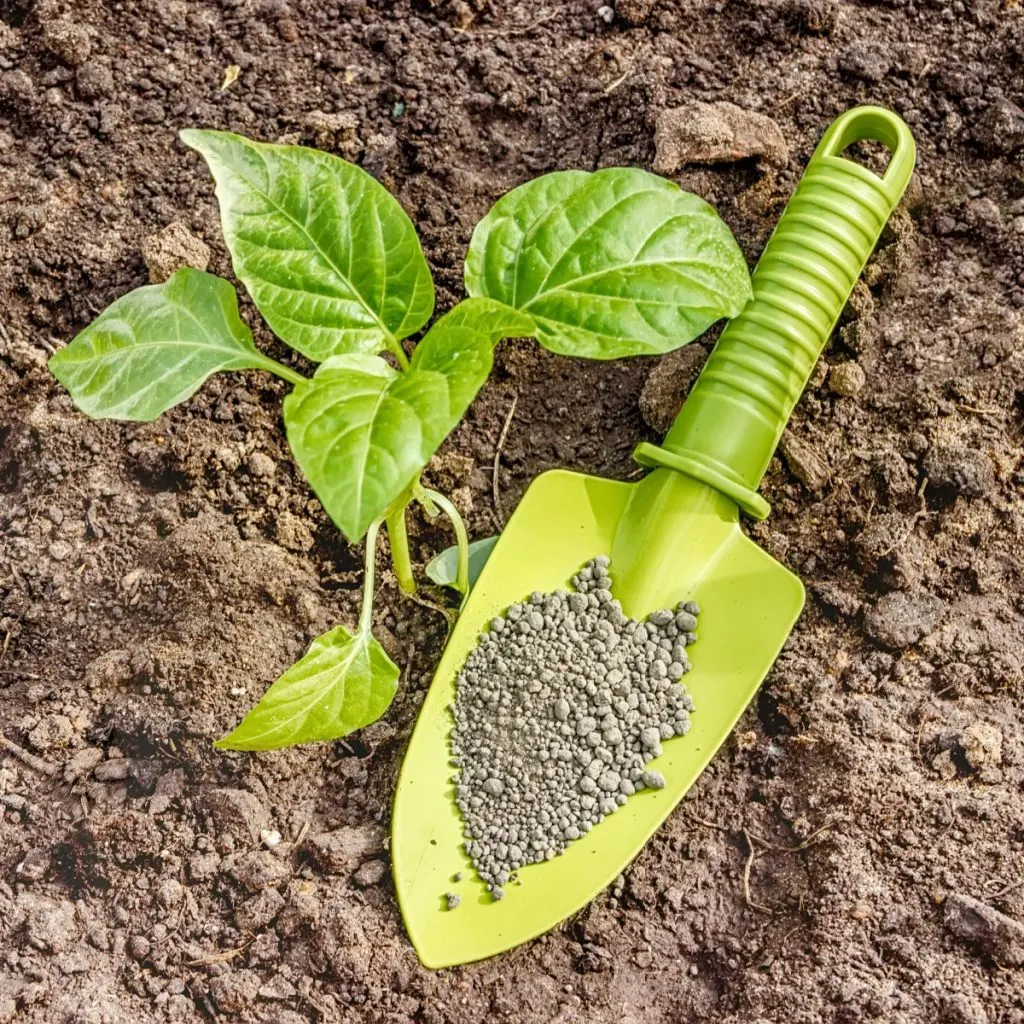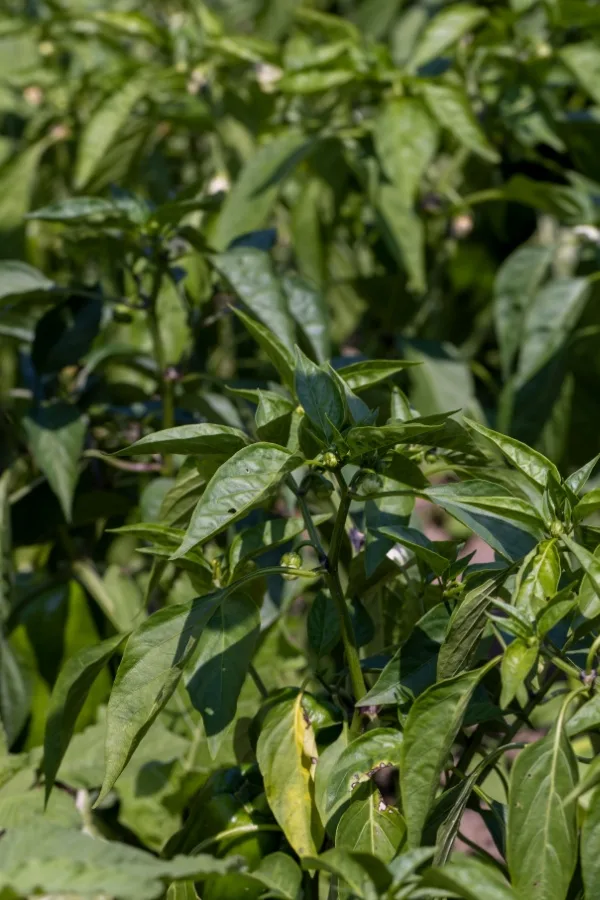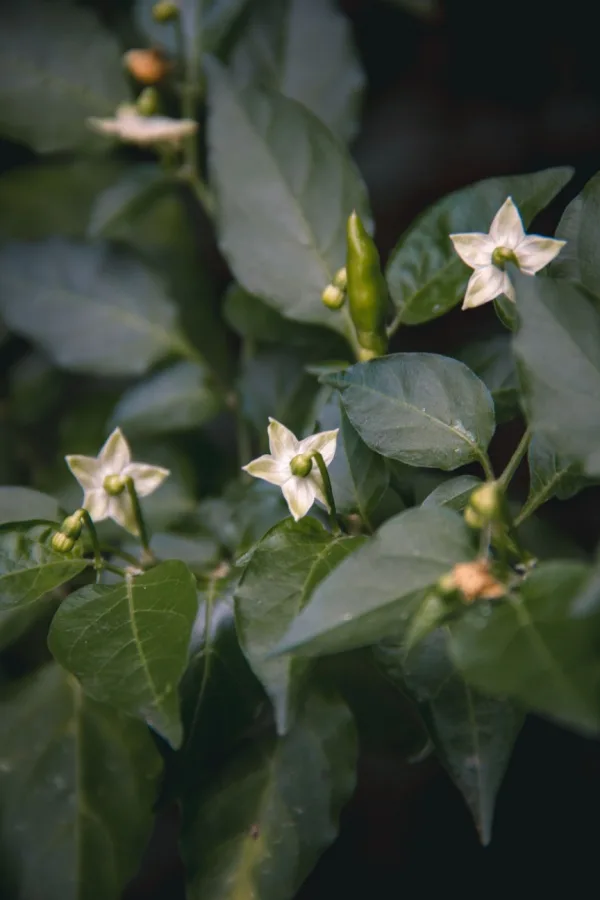Want to know the best way to fertilize your pepper plants this year for a big harvest of delicious peppers?
Just like tomato plants, pepper plants are extremely heavy feeders. Even the richest of soil quickly ends up depleted of nutrients as the growing season goes along. This is not just true for peppers planted in traditional garden spaces, but even more so for pepper plants growing in containers and raised beds.
At the same time, peppers are unfortunately often one of the most neglected plants when it comes to fertilizing. All too often, gardeners just let them grow as they are. But by simply giving peppers a boost of the nutrients they need most at just the right time – you can double or even triple your harvest!

It takes a lot of energy and resources in order to grow thick foliage, strong stems and loads of blooms and fruit. But not just any fertilizer will do the trick. In fact, it takes a couple of different types to really have your plants growing and producing.
As you will see below, by using a simple two-prong approach of granular fertilizer and liquid fertilizer, you can provide plants with exactly what they need to grow strong and healthy all season long!
The Best Way To Fertilize Pepper Plants!
Most commercial fertilizers are made up of three main key ingredients. You can usually find them on the label listed as N-P-K (Nitrogen – Phosphorous – Potassium).
All three are key to producing healthy plants. However, they each play a different part in creating full foliage and the ability to set blooms and fruit.
Nitrogen helps support growing plants with strong stems and lush foliage. This development is vital to plants early on in the growing process. However, too much nitrogen will cause plants to put a pause on pushing out blooms. Instead, they use the excess only towards foliage growth.

Phosphorus and potassium are more vital to the overall plant’s health as well as the development of blooms. In addition, they are key to pushing out and ripening newly formed fruit.
It’s important to use fertilizers with the right combination of those three nutrients at the right time in the growing process. Too much nitrogen early on results in plants that are full and beautiful but have hardly any blooms. Too much potassium and phosphorus early on and plants won’t have sufficient foliage to support blooms or fruit.
But when you get the combination just right, your plants will be strong, healthy, and pushing out loads of peppers long into the growing season!
Feeding For Strong Foliage Growth – The Best Way To Fertilize Pepper Plants
The first part of the fertilizing process is to focus on feeding your pepper plants to promote strong growth and foliage production. To do this, choose a granular fertilizer that has an equal balance of nutrients.
Look for a fertilizer with a ratio of 5-5-5 or 4-4-4. This ratio is the perfect amount to provide a slow but steady release of nutrients. At the same time, it won’t be too much that it overpowers young plants. Product Link: Jobe’s Organics Granular All Purpose Fertilizer
You can also use worm castings to accomplish this task. Worm castings are the product that is left behind after worms break down and consume soil and organic materials. The castings are packed full of nutrients that can absorb easily into plants. See, “How To Use Worm Castings To Power Plants”

To use granular fertilizer or worm castings, you can start applying right when you plant your peppers into the soil. For granular fertilizer, 1/8th of a cup per plant per feeding is best. For worm castings, use 3/4 to 1 full cup per plant per feeding.
Every time you water plants or it rains, the fertilizer releases a low dose of nutrients into the soil. These nutrients are then easily absorbed by the plant’s roots. For this granular feeding, apply once a month. This will continue to give your pepper plants exactly what they need for growth – without overfeeding them.
Feeding For More Blooms & Fruit – The Best Way To Fertilize Pepper Plants
After your pepper plants start to become established (about 3 to 4 weeks after planting), it’s time to start the second part of the fertilizing process for blooms and fruit. And for this energy source, it’s best to power plants with a liquid fertilizer.
Unlike granules, liquid fertilizers can be quickly absorbed by the plant’s roots. In addition, you can apply them both to the soil as well as directly onto the foliage, allowing a quick burst of energy when needed.

The key to using liquid fertilizers successfully with pepper plants is to focus on a product that contains higher amounts of both phosphorous and potassium. Choose a liquid fertilizer that has at least double the amount of both to power maximum bloom potential.
How To Apply Liquid Fertilizers To Pepper Plants
Apply liquid fertilizer every 10 to 14 days. But instead of using it at full power, only mix it at about half the recommended dose. This way you can provide plants with a steady supply of nutrients that is ideal for supporting new blooms and fruit production.
Always apply liquid fertilizers early in the morning or late at night. This will help prevent the delicate foliage from becoming scalded by the hot sun.
Using liquid fertilizers in conjunction with granules helps to give plants instant boosts of nutrients as plants begin to mature. The higher phosphorous and potassium levels allow plants to have the energy needed to produce more blooms and maintain ripening fruit. It really is the perfect one-two punch of fertilizing for pepper plants!
Simple Garden Life
Follow Our Facebook Page For Even More Great Tips! Simple Garden Life Facebook Page
Simple Garden Life is a website dedicated to keeping gardening fun, simple and enjoyable! We publish two new articles each week along with a new garden podcast episode every two weeks. This article may contain affiliate links.
